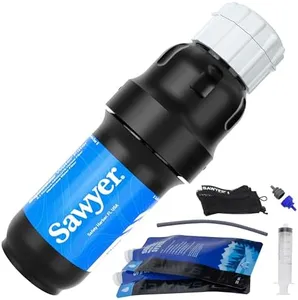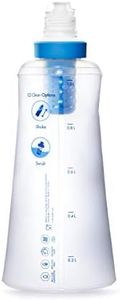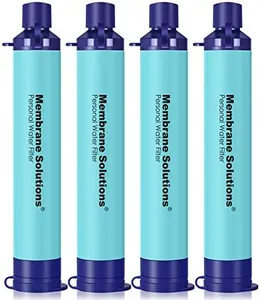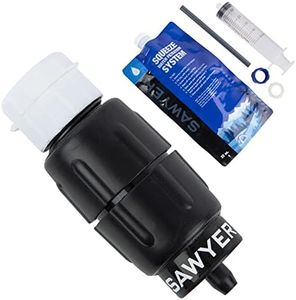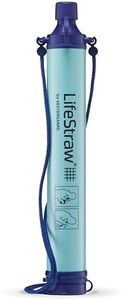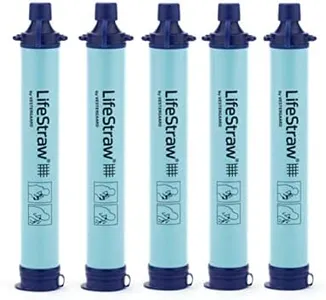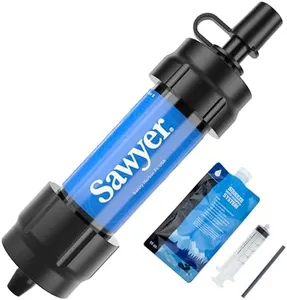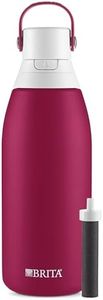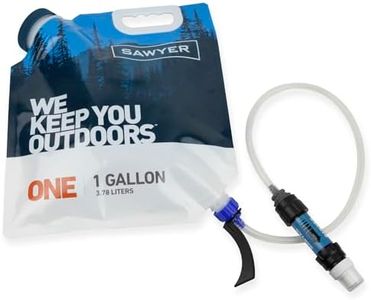We Use CookiesWe use cookies to enhance the security, performance,
functionality and for analytical and promotional activities. By continuing to browse this site you
are agreeing to our privacy policy
10 Best Water Filter Straws
From leading brands and best sellers available on the web.Buying Guide for the Best Water Filter Straws
Water filter straws are handy, portable devices designed to help you drink safely directly from lakes, rivers, or questionable tap water sources. They're excellent for hiking, camping, travel, or emergencies. Choosing the right water filter straw isn’t just about grabbing any one off the shelf—you need to consider your intended use, typical water sources, and personal preferences to ensure clean and safe hydration wherever you are.Filtration Capability (Micron Rating)The micron rating tells you the smallest size particle the straw can block—measured in microns. Smaller numbers mean better filtration. Typical values range from 0.1 to 0.3 microns. A lower micron rating is important because it captures more contaminants, including bacteria and protozoa. If you expect to drink from very murky or questionable sources, aim for the lowest micron rating you can find. For most travelers and hikers using clear-looking rivers or lakes, 0.2 to 0.3 microns works fine.
Filter TypeWater filter straws may use hollow fiber membranes, activated carbon, or a combination. Hollow fiber is excellent for removing bacteria and protozoa. Activated carbon improves taste by reducing chemicals and odors. If your main concern is microorganisms, hollow fiber is essential. If taste and chemical pollutants might be an issue, choose a straw with an added carbon filter. Think about where you’ll be using the straw and whether water taste and chemical contamination are factors.
Lifespan (Gallons/Liters Filtered)This tells you how much water the straw can filter over its lifetime, usually noted in gallons or liters. Some straws last for a few hundred liters, while others filter up to several thousand. If you’re planning a single short trip, a lower lifespan might suffice. If you need the straw for regular use or long-term emergency prepping, pick one with a higher capacity to avoid frequent replacement.
Weight and SizeThe weight and size of the straw can affect how portable and convenient it is to carry. Lightweight, compact straws are easy to stash in your backpack or emergency kit. If ultralight packing is your goal, opt for the slimmest, lightest straw available with adequate filtration. For general camping or home use, size may matter less.
Ease of Use and Flow RateThe flow rate is how quickly water passes through the straw. Some straws require strong suction, which can be tiring if you drink a lot at once, while others are easier and more comfortable to use. If you have limited strength or will be sharing with kids, prioritize a straw with a smooth and easy flow. Look for user feedback on comfort and drinking effort.
Removes VirusesMost basic filter straws do not remove viruses, which are smaller than bacteria. If you might be drinking from sources at higher risk for virus contamination, such as in some developing regions, look for advanced straws with specific virus filtration. For most outdoor usage in developed areas, this may not be as necessary, but always consider your environment first.
Maintenance and CleanabilitySome filter straws require backflushing (pushing clean water back through the filter) or other maintenance to maintain flow and effectiveness. Simpler maintenance means easier care and longer life. If you want a hassle-free experience, look for options that require little to no cleaning, or check if replacement filters are easily available.
